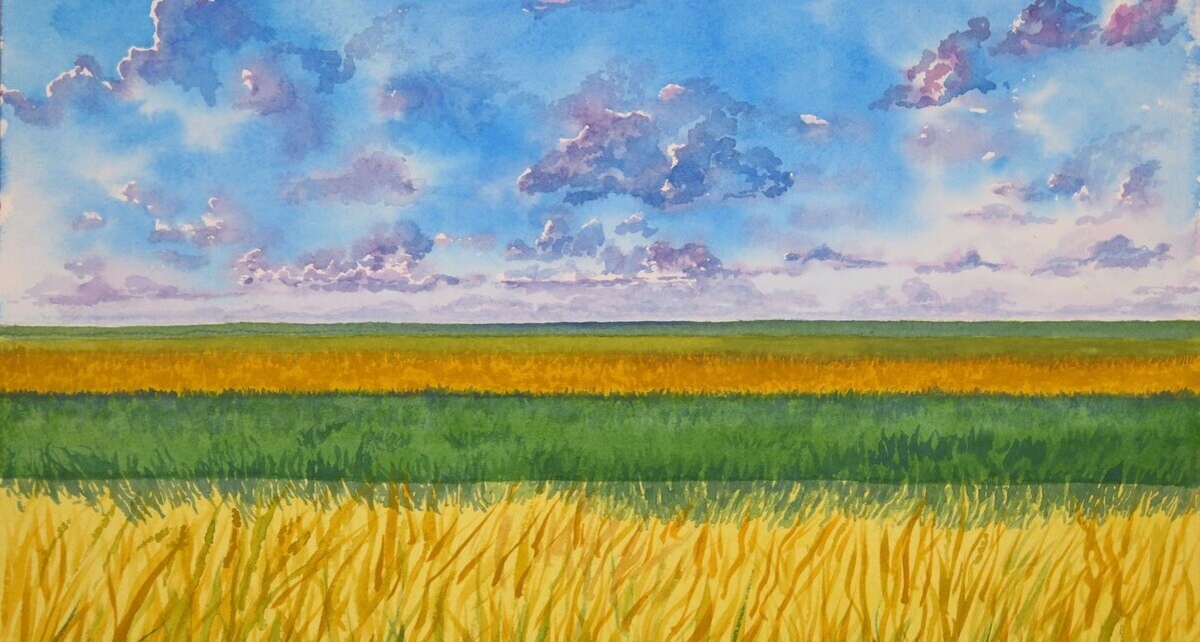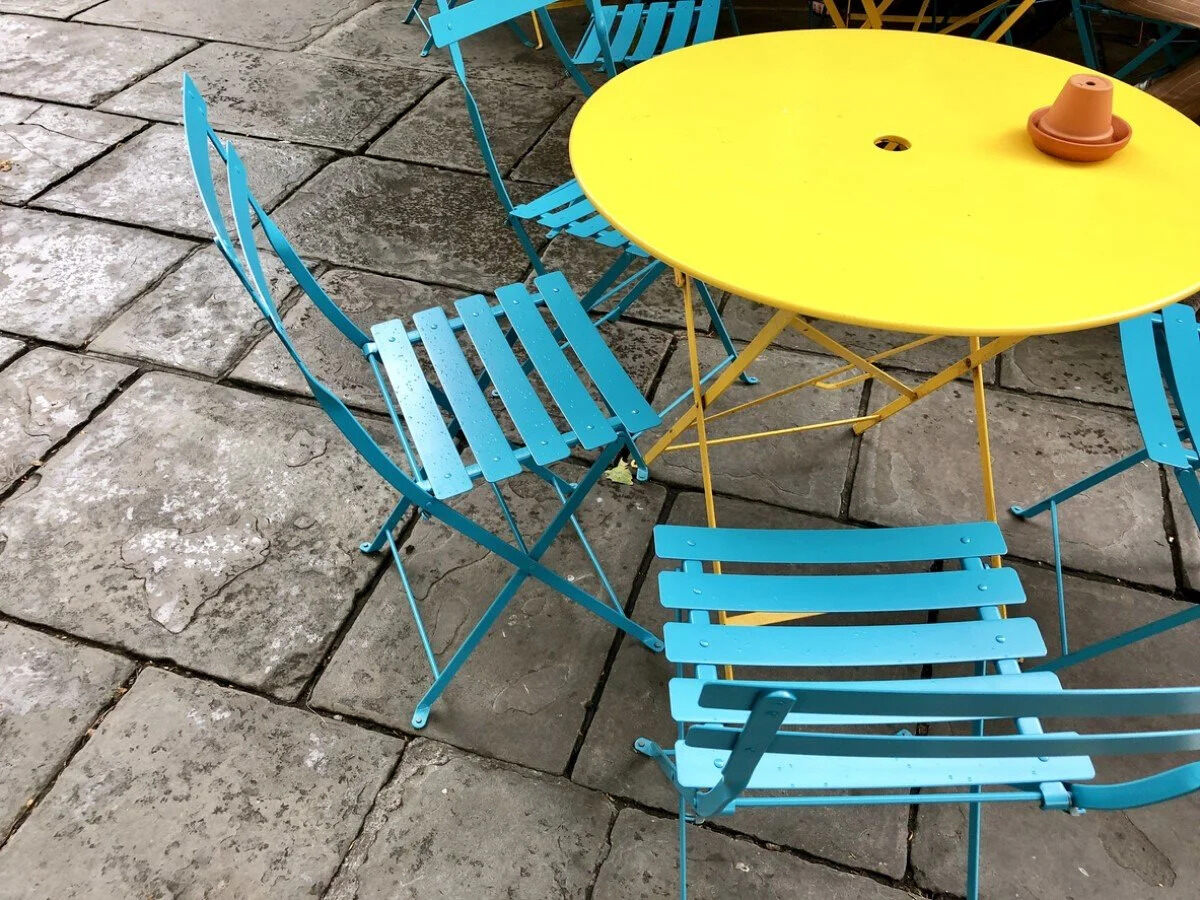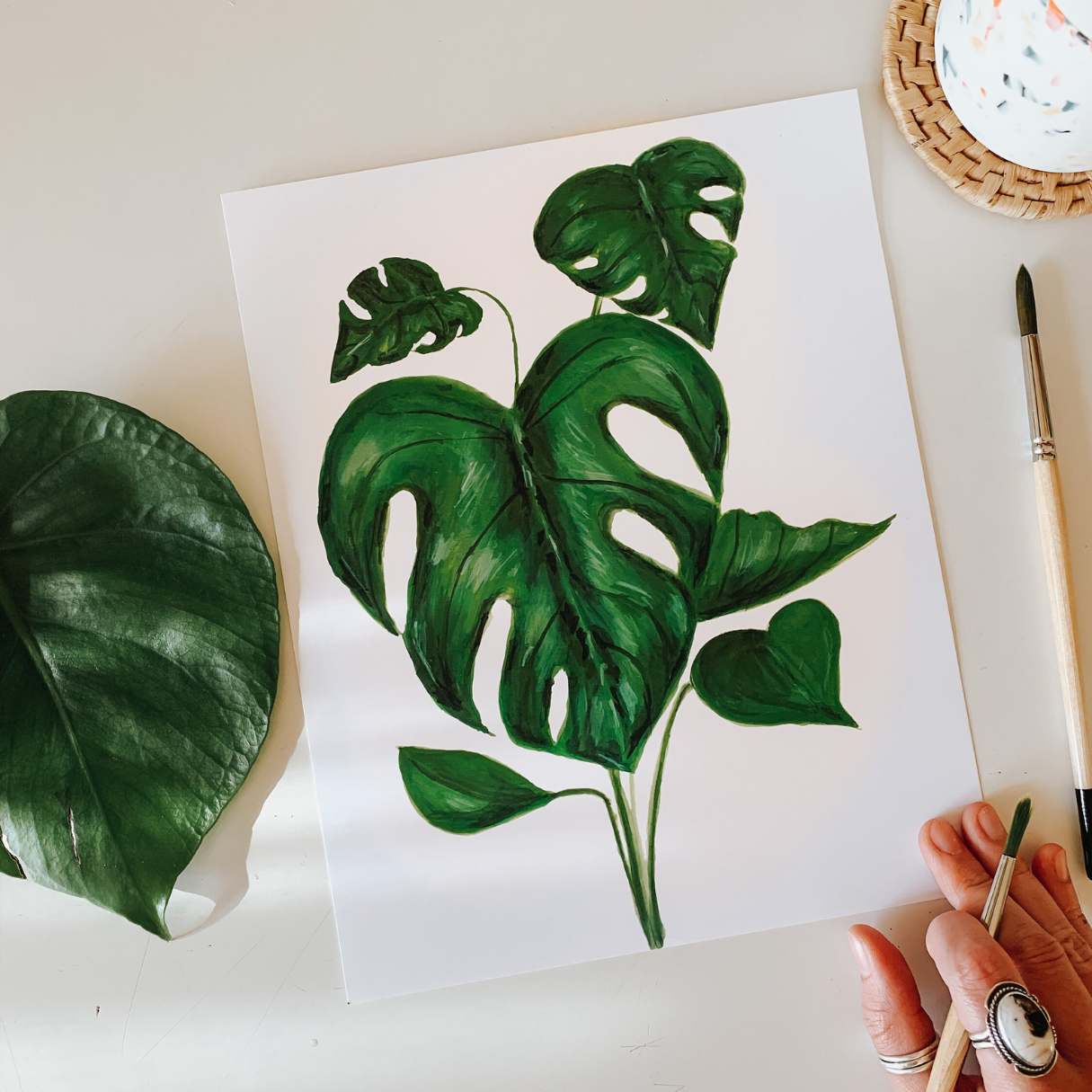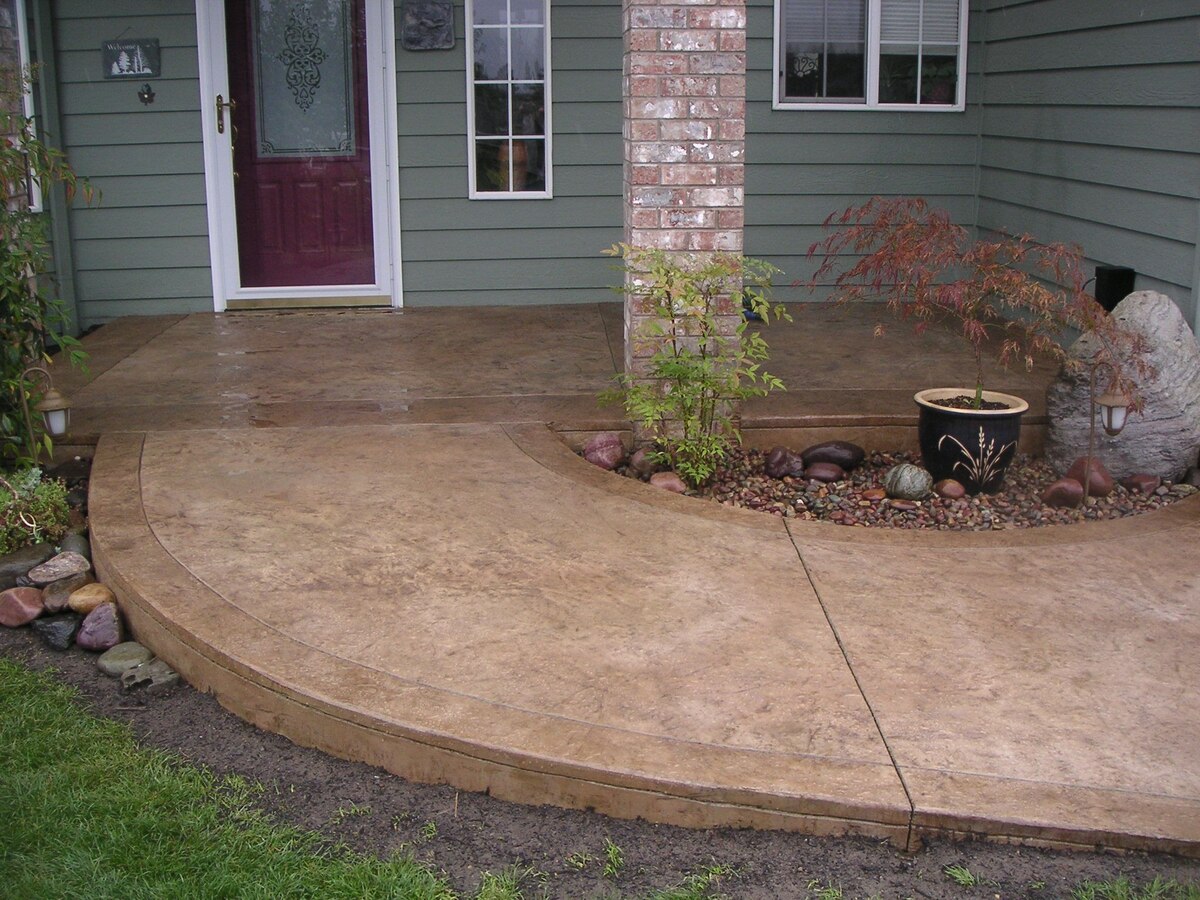Home>Gardening & Outdoor>Landscaping Ideas>How To Paint Long Grass


Landscaping Ideas
How To Paint Long Grass
Published: January 25, 2024
Learn how to paint long grass with our expert landscaping ideas. Transform your outdoor space with our easy and creative techniques. Discover more now!
(Many of the links in this article redirect to a specific reviewed product. Your purchase of these products through affiliate links helps to generate commission for Storables.com, at no extra cost. Learn more)
Introduction
Welcome to the wonderful world of painting long grass! Whether you're an experienced artist looking to expand your repertoire or a beginner eager to explore new techniques, this guide will walk you through the process of bringing vibrant, lifelike long grass to life on your canvas.
Painting long grass can add depth, movement, and a sense of natural beauty to your artwork. The intricate details and varying hues found in a field of long grass offer a captivating subject for artists to explore. Through this step-by-step guide, you'll learn how to create stunning, realistic long grass using a variety of painting techniques.
As we delve into the art of painting long grass, we'll cover everything from selecting the right materials and colors to creating texture and adding depth. By the end of this guide, you'll have the knowledge and confidence to effectively capture the essence of long grass in your paintings.
So, grab your brushes, prepare your canvas, and let's embark on an artistic journey to master the art of painting long grass!
Key Takeaways:
- Painting long grass requires selecting the right materials, choosing diverse colors, and skillfully preparing the canvas to create a realistic and captivating artwork.
- Adding texture, highlights, and shadows, as well as incorporating detail and depth, brings the long grass painting to life with movement, depth, and immersive realism.
Read more: How To Paint Grass With Oil Paint
Choosing the Right Materials
Before you begin your long grass painting adventure, it’s essential to gather the right materials. The quality of your materials can significantly impact the outcome of your artwork, so it’s important to invest in reliable supplies. Here’s what you’ll need:
Canvas:
Start with a sturdy, primed canvas that’s suitable for the type of paint you’ll be using. Consider the size of your canvas based on the scale of your painting and the level of detail you wish to achieve.
Paints:
Acrylic paints are a popular choice for painting long grass due to their quick drying time and versatility. Look for a range of green shades, from pale yellows and vibrant limes to deep forest greens. Additionally, consider adding earthy tones and subtle hints of other colors, such as blues and purples, to add depth and realism to your grass.
Brushes:
Invest in a variety of brushes, including flat and round brushes in different sizes. Fine, pointed brushes are ideal for adding intricate details, while broader brushes can help create sweeping, organic strokes for the grass blades.
Read more: How To Paint Grass In Oil
Palette:
Choose a palette large enough to mix your colors effectively. A disposable palette or a stay-wet palette can help keep your paints workable for longer periods.
Mediums and Additives:
Consider using acrylic mediums to adjust the consistency and drying time of your paints. Gel mediums can add texture to your grass, while flow improvers can enhance the flow of your paints for smoother application.
Reference Materials:
Collect reference photos of long grass to inspire and guide your painting. Observing the natural flow and color variations of real grass can inform your artistic choices and add authenticity to your artwork.
By selecting high-quality materials tailored to your preferences and painting style, you’ll set the stage for a successful and enjoyable long grass painting experience.
Selecting the Right Colors
Choosing the perfect colors for your long grass painting is crucial for capturing the lush, natural beauty of a grassy landscape. While green is the primary color associated with grass, incorporating a diverse range of hues and tones will elevate the visual appeal and realism of your artwork. Here’s how to select the right colors for your long grass painting:
Read more: How To Paint Your Grass
Varying Shades of Green:
Green is the foundation of your grassy landscape, and incorporating a spectrum of green shades will add depth and dimension to your painting. Experiment with pale, vibrant, and muted greens to depict the varying stages of growth and light exposure in the grass. Additionally, consider mixing in yellow and blue tones to achieve a diverse range of green hues.
Earth Tones:
Complement the greens with earthy tones such as siennas, umbers, and ochres to represent the soil and underlying foliage. These warm, natural colors can be subtly woven into the grassy areas to add richness and contrast.
Hint of Other Colors:
Infuse your grassy landscape with subtle hints of other colors found in nature, such as soft blues, purples, and even hints of red or orange. These unexpected touches can mimic the presence of wildflowers, clovers, or other flora interspersed within the grass, adding visual interest and a touch of whimsy to your painting.
Contrasting Colors:
Consider the surrounding elements in your composition, such as the sky, distant trees, or bodies of water. Utilize contrasting colors to create dynamic visual relationships within your painting. For instance, a bright, sunlit grassy field may contrast beautifully with a deep blue sky or the cool tones of distant hills.
By carefully selecting and layering a diverse palette of colors, you can breathe life into your long grass painting, capturing the nuanced beauty of a natural landscape with every brushstroke.
Read more: How To Make Grass Paint
Preparing Your Canvas
Before you dive into painting your long grass masterpiece, it’s essential to prepare your canvas to ensure a smooth and receptive surface for your artwork. Proper canvas preparation can enhance the longevity and vibrancy of your painting. Here’s a step-by-step guide to preparing your canvas for your long grass painting:
Prime Your Canvas:
Start with a high-quality, pre-stretched canvas or prepare your own canvas by stretching it over a sturdy wooden frame. Apply a layer of gesso to prime the surface, creating a uniform and stable base for your paint. Gesso also prevents the paint from being absorbed too quickly, allowing for better control and blending.
Sketch Your Composition:
Once the gesso is dry, lightly sketch the outlines of your grassy landscape using a pencil. Pay attention to the flow and direction of the grass blades, as well as any focal points or natural features within the scene. A well-planned composition will guide your painting process and create a cohesive visual narrative.
Establish a Background Wash:
If your composition includes a sky or distant elements, consider applying a light wash of color to establish the background. This can help set the mood and atmosphere of your painting, providing a backdrop against which the long grass will stand out.
Read more: How To Digitally Paint Grass
Layer in a Base Color for the Grass:
Using a large, soft brush, loosely block in a base color for the grassy areas. This initial layer will serve as a foundation for building depth and texture as you progress with your painting. Consider the overall tonal values and the play of light and shadow within the grassy expanse.
Blend and Soften Edges:
While the base color is still wet, use a clean, dry brush to blend and soften the edges, creating a seamless transition between the sky, background, and grass. This technique can establish a sense of depth and atmospheric perspective within your painting.
By meticulously preparing your canvas, you’ll establish a solid groundwork for your long grass painting, setting the stage for the intricate details and vibrant colors that will bring your artwork to life.
Creating Texture
Texture plays a pivotal role in capturing the organic, tactile quality of long grass in your painting. By infusing your artwork with varied textures, you can evoke the sensation of wind-swept meadows and add depth to your composition. Here’s how to create captivating texture in your long grass painting:
Utilize Different Brush Strokes:
Experiment with a range of brush strokes to mimic the diverse textures found in long grass. Use a combination of short, choppy strokes and long, sweeping motions to represent the individual blades of grass. Varying the pressure and direction of your brushstrokes can emulate the natural movement and density of the grassy foliage.
Read more: How To Make Grass Color Paint
Layering Techniques:
Build up layers of paint to construct a three-dimensional illusion of depth within the grass. Apply translucent glazes and thicker impasto strokes strategically to convey the overlapping layers and intricate patterns present in a field of long grass. This layering technique can create visual interest and a sense of realism in your artwork.
Textured Mediums and Additives:
Incorporate textured mediums or additives into your paint to enhance the tactile quality of your grassy landscape. Gel mediums, modeling paste, or coarse sand can be mixed with your paints to create rough, grainy textures that emulate the uneven terrain and wild, untamed nature of long grass.
Scumbling and Dry Brushing:
Employ scumbling and dry brushing techniques to impart a dry, wispy appearance to sections of the grass. Lightly drag a dry brush over the surface with a minimal amount of paint to create a delicate, airy texture, simulating the ethereal quality of sunlit grass blades.
Embrace Imprecision:
Embrace the organic, imperfect nature of long grass by allowing for spontaneity and irregularities in your brushwork. Avoid overly uniform patterns, and instead, embrace the natural chaos and asymmetry inherent in a field of swaying grass.
By skillfully integrating these texture-enhancing techniques, you’ll breathe life into your long grass painting, infusing it with a tactile richness that beckons viewers to immerse themselves in the lush, verdant landscape you’ve created.
Applying the Base Layer
The base layer sets the foundation for your long grass painting, establishing the overall tone and structure of the grassy landscape. This initial layer serves as a starting point from which you’ll build depth and nuance as you progress with your artwork. Here’s how to effectively apply the base layer to bring your long grass painting to life:
Mixing Custom Colors:
Begin by mixing a variety of green shades to create a nuanced palette for your grass. Incorporate subtle hints of other colors, such as yellows, blues, and earthy tones, to infuse depth and vibrancy into your base layer. Consider the play of light and shadow within the grassy expanse as you select your colors.
Blocking In the Masses:
Using a medium-sized, flat brush, loosely block in the masses of grass, considering the overall shape and flow of the landscape. Pay attention to the direction and movement of the grass blades, allowing your brushstrokes to reflect the organic, undulating nature of the foliage. This initial blocking sets the stage for the intricate details to come.
Establishing Tonal Values:
Focus on establishing the tonal values within the grassy areas, considering the interplay of light and shadow. Create a sense of depth by varying the intensity of your greens, incorporating lighter tones where the sunlight hits and deeper shades in the shadowed areas. This contrast will add dimension and visual interest to your painting.
Read more: How To Get Paint Off Grass
Blending and Softening Edges:
While the base layer is still wet, use a clean, dry brush to blend and soften the edges, seamlessly integrating the grass into the surrounding elements. This technique creates a cohesive transition between the sky, background, and grass, fostering a sense of unity within your composition.
Building Subtle Variation:
Introduce subtle variation within the base layer by incorporating hints of different hues and textures. This can mimic the natural diversity found within a field of long grass, infusing your painting with a lifelike quality that captivates the viewer’s eye.
By skillfully applying the base layer, you’ll establish a compelling groundwork for your long grass painting, paving the way for the intricate details and visual depth that will elevate your artwork to new heights.
Adding Highlights and Shadows
Highlights and shadows are essential components in capturing the luminous, three-dimensional quality of long grass in your painting. By skillfully incorporating light and shadow, you can infuse your artwork with depth, drama, and a captivating sense of realism. Here’s how to effectively add highlights and shadows to bring your long grass painting to life:
Observing Light Sources:
Identify the primary light source in your composition and visualize how it interacts with the grassy landscape. Consider the angle and intensity of the light, as well as the resulting cast shadows and illuminated areas within the grass. This observation will guide the placement of highlights and shadows in your painting.
Read more: How To Make Grass With Acrylic Paint
Enhancing Dimension with Highlights:
Using a fine, pointed brush, selectively apply highlights to the tips and edges of the grass blades where they catch the light. Focus on creating a sense of movement and luminosity within the grass, allowing the highlights to impart a dynamic, sun-kissed quality to the foliage. Vary the intensity of the highlights to convey the play of light across the textured surface.
Conveying Depth through Shadows:
Delicately introduce shadows in areas where the grass overlaps or recedes into the background. Utilize cooler, darker tones to define the shadowed regions, emphasizing the natural contours and undulations of the grass. The interplay of light and shadow will accentuate the volume and depth of the grassy expanse.
Creating Soft Transitions:
Blend and soften the edges of the highlights and shadows to achieve a seamless transition, ensuring that they integrate harmoniously with the base layer. This technique fosters a sense of continuity and natural variation within the grass, avoiding stark, artificial contrasts.
Emphasizing Focal Points:
Consider enhancing specific focal points within your composition by intensifying the interplay of highlights and shadows. By strategically accentuating certain areas of the grass, you can draw the viewer’s gaze to key elements and create a compelling visual narrative within your painting.
By skillfully incorporating highlights and shadows, you’ll breathe life into your long grass painting, infusing it with a captivating interplay of light and depth that evokes the enchanting beauty of a sun-dappled meadow.
Read more: How To Paint Trex Decking
Adding Detail and Depth
Detail and depth are crucial elements in conveying the intricate complexity and immersive realism of a field of long grass in your painting. By infusing your artwork with meticulous detail and nuanced depth, you can create a captivating, lifelike portrayal of a lush, verdant landscape. Here’s how to effectively add detail and depth to bring your long grass painting to life:
Refining Individual Blades:
With a fine, pointed brush, meticulously refine the individual grass blades, paying attention to their varying lengths, angles, and organic irregularities. Capture the delicate, swaying movement of the grass, allowing your brushstrokes to convey a sense of natural rhythm and vitality within the foliage.
Emphasizing Textural Variation:
Introduce textural variation within the grassy expanse by alternating between thicker impasto strokes and delicate, wispy details. This interplay of textures can evoke the tactile quality of long grass, infusing your painting with a sense of depth and visual richness that invites closer inspection.
Incorporating Subtle Details:
Infuse your painting with subtle, evocative details such as tiny wildflowers, delicate seed heads, or the occasional fluttering insect nestled within the grass. These understated elements can add a touch of whimsy and narrative intrigue to your artwork, inviting viewers to immerse themselves in the enchanting world you’ve created.
Read more: How To Paint Decking Properly
Conveying Perspective and Distance:
Utilize diminishing scale and atmospheric perspective to convey the receding depth of the grassy landscape. As the grass extends into the distance, subtly reduce the level of detail and tonal contrast, creating a sense of spatial depth that draws the viewer into the expansive, sunlit meadow.
Highlighting Focal Points:
Emphasize specific focal points within your composition by infusing them with heightened detail and visual interest. Whether it’s a sunlit clearing, a cluster of vibrant wildflowers, or a gentle curve in the grassy terrain, these focal elements can serve as captivating visual anchors within your painting.
By skillfully adding detail and depth, you’ll infuse your long grass painting with an immersive, multi-dimensional quality that captivates the viewer, inviting them to lose themselves in the lush, vibrant world you’ve meticulously crafted.
Final Touches and Tips
As you near the completion of your long grass painting, incorporating final touches and applying expert tips can elevate your artwork to a new level of visual impact and artistic finesse. These concluding steps and insights will help you refine and perfect your long grass masterpiece:
Subtle Blending and Softening:
Take a moment to softly blend and soften any remaining harsh edges or transitions within the grassy areas. This gentle refinement can create a seamless, cohesive flow throughout the painting, enhancing the overall visual harmony and natural realism of the scene.
Read more: How Long To Paint A Living Room
Accentuating Sunlit Areas:
Consider revisiting areas where sunlight filters through the grass, adding delicate touches of warmth and luminosity to accentuate the sunlit patches. This subtle enhancement can infuse your painting with a radiant, inviting quality, drawing the viewer’s eye to the play of light within the verdant landscape.
Refining Focal Points:
Devote careful attention to refining and embellishing the focal points within your composition. Whether it’s a captivating interplay of light and shadow, a cluster of vibrant blooms, or a meandering pathway through the grass, refining these focal elements can enrich the narrative and visual allure of your painting.
Stepping Back for Perspective:
Periodically step back from your painting to gain perspective and assess the overall balance and impact of your long grass composition. Viewing your artwork from a distance can provide valuable insights into areas that may require fine-tuning, ensuring a cohesive and compelling visual presentation.
Expert Tip: Embracing Imperfection
Embrace the organic, spontaneous nature of long grass by allowing for subtle imperfections and asymmetry within your painting. The inherent irregularities and natural chaos found in a field of grass can contribute to the authentic, enchanting charm of your artwork.
Read more: How To Paint Your Concrete Patio
Expert Tip: Capturing Movement
To convey the dynamic, windswept quality of long grass, consider infusing your painting with subtle indications of movement. Whether it’s a gentle swaying of the grass blades or the suggestion of a rustling breeze, capturing the essence of movement can imbue your artwork with a captivating sense of vitality.
By applying these final touches and expert tips, you’ll refine your long grass painting with finesse and insight, culminating in a captivating, immersive portrayal of the natural splendor and timeless allure of a sunlit meadow.
Conclusion
Congratulations on embarking on a creative journey to master the art of painting long grass! Through the meticulous exploration of techniques and the infusion of artistic insight, you’ve delved into the captivating world of capturing the organic beauty and timeless allure of a sun-dappled meadow. As you conclude your artistic endeavor, reflect on the enriching experiences and invaluable skills you’ve cultivated throughout the process.
By meticulously selecting the right materials, infusing your palette with a diverse range of colors, and skillfully preparing your canvas, you’ve laid the groundwork for a compelling and immersive long grass painting. The deliberate creation of texture, the artful application of the base layer, and the nuanced interplay of highlights and shadows have imbued your artwork with depth, dimension, and captivating realism.
As you’ve ventured into adding detail and depth, refining focal points, and applying final touches, you’ve honed your ability to infuse your painting with a rich, evocative narrative and a profound sense of natural beauty. The expert tips and insightful techniques you’ve embraced have empowered you to capture the essence of movement, light, and the intricate nuances of a sunlit meadow teeming with vibrant, windswept grass.
As you stand back and behold your completed long grass painting, immerse yourself in the enchanting world you’ve brought to life on canvas. The swaying blades of grass, the interplay of light and shadow, and the subtle, evocative details collectively evoke the timeless allure and immersive charm of a sun-kissed meadow, inviting viewers to lose themselves in the captivating beauty of nature.
Whether you’re a seasoned artist expanding your repertoire or a budding enthusiast eager to explore new horizons, the art of painting long grass offers a boundless canvas for creativity, expression, and artistic growth. As you continue to refine your skills and embark on future artistic endeavors, may the vibrant, windswept grass serve as a timeless muse, inspiring your creativity and inviting viewers to behold the enchanting allure of the natural world through your brushstrokes.
Embrace the beauty of the ever-changing landscape, and let the art of painting long grass be a testament to the enduring allure and timeless splendor of the natural world.
Frequently Asked Questions about How To Paint Long Grass
Was this page helpful?
At Storables.com, we guarantee accurate and reliable information. Our content, validated by Expert Board Contributors, is crafted following stringent Editorial Policies. We're committed to providing you with well-researched, expert-backed insights for all your informational needs.




0 thoughts on “How To Paint Long Grass”